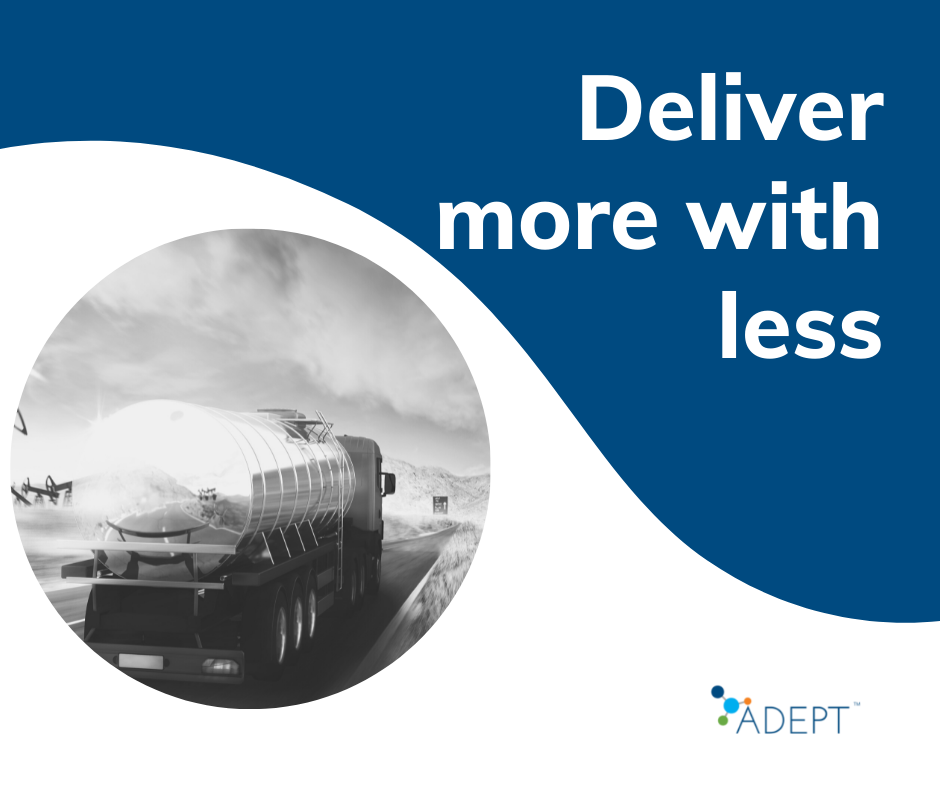We have been in this industry for over 30 years. In that time, we have worked with hundreds and hundreds of heating oil and propane dealers of all different sizes and shapes. Our clients have been multi-state public companies, they have been mid-size regional operators, they have been multi-generation local dealers, and they have been companies who have a fleet of 4 trucks to deliver to their thousand customers.
All companies share 3 things. Yes, everyone.
- Deliveries are smaller than anticipated – or smaller than the self-defined “Optimal Delivery” size.
- Tank size is treated with more importance than consumption – Deliveries do not consider the individual traits of customer consumption when planning – whether it be the time of year or the pace of consumption (need to clean this up)
- There is excess capacity for 11 months of the year – Budgeting and delivery planning are all based on weather & consumption not based on capacity & efficiency.
There is excess capacity for 11 months of the year
In today’s delivery world, the understanding of demand and consumption are virtually interchangeable. Once a tank gets “down to” a certain level, a delivery needs to be made – no questions asked.
But we do have some questions. For example, what would happen if, in the middle of January, a few drivers were out sick, and you couldn’t make all your planned deliveries – which deliveries would be delayed? That is easy – it would be the ones with the highest K’s, as “they can wait”. Well, if they can wait, why are they even scheduled for a delivery? The delivery planning is set up such that once a reserve level is hit, a delivery is planned. That might help avoid runouts, but that also might not be overly efficient.
We would like to redefine efficiency from the largest deliveries possible, while avoiding runouts to deliveries that will avoid runouts WHILE SPENDING THE LEAST AMOUNT OF MONEY. As described above, using an approach of Dynamic Reserves can cut down on the number of deliveries. Each saved delivery will save delivery expenses. But there is another, equally valuable, consideration: Your fleet!
Depending upon exactly what you include in your calculation, the costs of your fleet (trucks, insurance, routine maintenance, inspections, etc.) are about one half of the total costs to deliver fuel – with the other half being comprised by the variable costs of driver and dispatcher wages, fuel, tire replacement, unplanned repairs, etc.
The fleet costs are fixed. If you own a truck in January, you own it in July. If you need 30 trucks in January and 3 in July, you will need to own 30 trucks (actually, you probably need to own closer to 35 trucks – yes, everyone has a few truck “in the shop” at points in time during the winter). If you can eliminate a truck (or three or six) from your fleet, without increasing the likelihood of runouts, how impactful could that be?
How can that be done? You need to start with the fact that in every month, except for possibly January (and parts of December and February), you have excess capacity in the form of trucks and drivers. Over the past two years, we have become very familiar with the refrain, “flatten the curve”. We want to flatten the curve by algorithmically shifting some deliveries from the peak, January, to a time where there is excess capacity – just about every other month! We know that we can’t push deliveries later and past the date when the tank will hit the reserve level, but how about making some deliveries earlier?
This is where we can and will defend our logic and our premise. Earlier deliveries, by definition, will be smaller deliveries. Smaller deliveries will lower the likelihood of runouts but will also be “less efficient” – according to the old definition of efficient deliveries being focused on the delivery size. We believe, and have proven, that earlier deliveries when “slotted properly” can take trucks off the road and creating excess capacity for expansion or the ability to run your business with fewer trucks.
It’s a lot of math, but computers are pretty fast and powerful nowadays. The secret to flattening the curve is to plan not for just the next delivery, but for the one after that and the one after that. The approach is to look at all the planned deliveries for the next full year (52 weeks) and to find the best balance between deliveries that are made at the Reserve Level and deliveries that should be “slotted” for an earlier delivery to lower the costs of having a fleet that spends most of the time in your yard or garage.
Do you still use paper maps, or do you use Waze? Do you have a cellphone, or do you drive around with a pocket full of quarters looking for a payphone? If your last investment in planning for more efficient deliveries was purchasing a back-office system a few decades ago, perhaps it is time that you invested in lowering your single largest operational expense.
We are so sure that we can make this work for you that we will guarantee your money back if you partner with us to invest in this solution. If we can’t show you the path towards savings, it won’t cost you anything.


